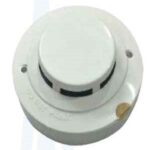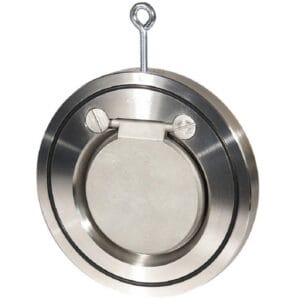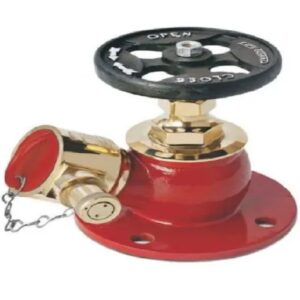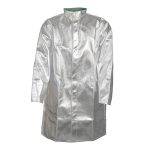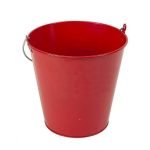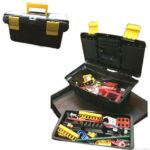Your list is empty, add products to the list to send a request
How to Identify a Smoke Detector?

01
May
In the realm of fire safety, smoke detectors are indispensable tools that provide early warnings, potentially saving lives and property. For professionals in building safety, facility management, and fire protection, understanding the various types of smoke detectors and their functionalities is crucial. This guide delves into the different types of smoke detectors, their identification, and best practices for selection and maintenance.
Understanding the Importance of Smoke Detectors
Smoke detectors are designed to sense smoke, a primary indicator of fire, and alert occupants promptly. Their early warning capabilities are vital in preventing fire-related injuries and fatalities. According to the National Fire Protection Association (NFPA), the risk of dying in a home fire is cut in half in homes with working smoke alarms.
Types of Smoke Detectors
Smoke detectors are categorized based on the technology they use to detect smoke. The main types include:
1. Ionization Smoke Detectors
Ionization detectors are highly responsive to fast-flaming fires. They contain a small amount of radioactive material between two electrically charged plates, which ionizes the air and creates a current. When smoke enters the chamber, it disrupts this current, triggering the alarm.
Identification Tips:
- Look for labels indicating “ionization” or symbols denoting radioactive material.
- These detectors often have a quicker response to flaming fires but may be more prone to false alarms from cooking.
2. Photoelectric Smoke Detectors
Photoelectric detectors are more sensitive to smoldering fires. They use a light source and a sensor; when smoke particles scatter the light beam, it hits the sensor and sets off the alarm.
Identification Tips:
- Labels may indicate “photoelectric.”
- These detectors are generally less prone to false alarms from cooking and are effective for detecting smoldering fires
3. Dual-Sensor Smoke Detectors
Dual-sensor detectors combine both ionization and photoelectric technologies, offering comprehensive detection of both flaming and smoldering fires.
Identification Tips:
- Packaging or labels will often mention “dual-sensor” or “combination.”
- These detectors provide broader protection but may be more expensive.
4. Heat Detectors
Heat detectors respond to temperature changes rather than smoke. They are suitable for areas where smoke detectors may cause false alarms, such as kitchens or garages.
Types:
- Fixed-Temperature: Triggers an alarm when a specific temperature is reached.
- Rate-of-Rise: Activates when the temperature increases rapidly over a short period.
Identification Tips:
- Labels will specify “heat detector” and may indicate the type.
- These are not substitutes for smoke detectors in living areas.
How to Identify a Smoke Detector
Identifying the type of smoke detector installed in a building involves:
- Visual Inspection: Check for labels or markings indicating the type (ionization, photoelectric, dual-sensor, or heat).
- Model Number: Look up the model number online or in the manufacturer’s documentation.
- Physical Characteristics:
- Ionization Detectors: May have a radioactive symbol.
- Photoelectric Detectors: Often larger due to the optical components.
- Dual-Sensor Detectors: May be labeled as combination detectors.
- Heat Detectors: Typically lack openings for smoke entry.
- Ionization Detectors: May have a radioactive symbol.
Best Practices for Smoke Detector Selection and Maintenance
- Installation Locations:
- Install smoke detectors inside each bedroom, outside each sleeping area, and on every level of the home, including the basement.
- Heat detectors are suitable for kitchens, garages, and attics.
- Install smoke detectors inside each bedroom, outside each sleeping area, and on every level of the home, including the basement.
- Maintenance:
- Test alarms monthly.
- Replace batteries at least once a year or when the detector chirps.
- Replace smoke detectors every 10 years.
- Test alarms monthly.
- Interconnectivity:
- For enhanced safety, use interconnected smoke alarms so that when one sounds, they all do.
- For enhanced safety, use interconnected smoke alarms so that when one sounds, they all do.
Advanced Smoke Detection: The Simplex Multi-Sensor Detector
For professionals seeking advanced detection capabilities, the Simplex Multi-Sensor Detector with Base offers a sophisticated solution. This device combines multiple sensing technologies to detect a wide range of fire signatures, enhancing early detection and reducing false alarms.
Key Features:
- Multi-sensor technology for comprehensive detection.
- Designed for compatibility with Simplex fire alarm systems.
- Suitable for various commercial and industrial applications.
Frequently Asked Questions
1. What are the 3 types of smoke detectors?
A: The three primary types are:
Ionization Smoke Detectors: Best for detecting fast-flaming fires.
Photoelectric Smoke Detectors: More responsive to smoldering fires.
Dual-Sensor Smoke Detectors: Combine both technologies for comprehensive coverage.
2. How to identify smoke detector and heat detector?
A: Smoke detectors are designed to sense smoke particles and typically have vents or openings to allow smoke to enter the sensing chamber. They may be labeled as ionization, photoelectric, or dual-sensor. Heat detectors, on the other hand, respond to temperature changes and often lack openings for smoke. They are labeled as fixed-temperature or rate-of-rise detectors
3. How do you detect the presence of smoke?
A: Smoke detectors use sensors to detect smoke particles in the air.
Ionization Detectors: Detect small particles from fast-flaming fires.
Photoelectric Detectors: Detect larger particles from smoldering fires.
Dual-Sensor Detectors: Utilize both methods for broader detection.
Conclusion
Understanding the different types of smoke detectors and their appropriate applications is essential for ensuring optimal fire safety in buildings. Regular maintenance and proper installation further enhance their effectiveness. For advanced detection needs, consider integrating multi-sensor detectors like the Simplex Multi-Sensor Detector into your fire safety system.
Enhance Your Building’s Fire Safety Today! Explore our range of high-quality fire safety products at Firesupplies. Our expert team is dedicated to providing the best solutions for your safety needs. Contact us to learn more about our products and how we can assist you in safeguarding your premises




